Our laboratory is equipped with technologies dedicated to the most efficient and innovative genomics. We are thus able to answer to all requests in this area.
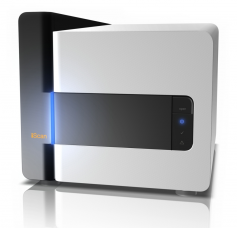
iScan – Illumina
The iScan array scanner enables a wide variety of applications for superior genetic analysis studies, including:

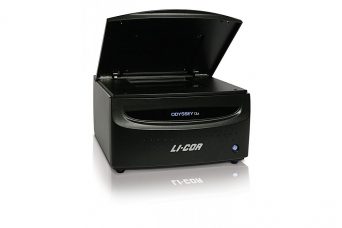
Odyssey – LICOR
Odyssey is an infrared imaging system which enables precise quantification over a range of about 4 log, and an increase of the sensitivity due to the absence of background noise. Odyssey is equipped with two lasers, allowing detection simultaneously on two wavelengths (around 700 and 800 nm). Immediate applications are standardizing results on the same matrix with the housekeeping gene, or the simultaneous detection of a protein and its phosphorylated form.
Finally, in addition to the “classic” western, the Odyssey can be used for many other applications like “in-cell” immunodetection experiments to quantify a protein on fixed cells in 24 or 96 micro-wells. This allows the study of the signaling pathways and screening without artifact due to cell lysis.
We can also count directly cells with a nuclear marker like DRAQ5.

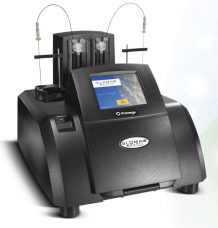
Glomax multi – Promega
The GloMax®-Multi Detection System can function as a luminometer (luciferase activity measurements) or a photometer (protein concentration quantification) in a 96 well plate format. Fast measurements, easy to use. Files can be exported in a .csv format.

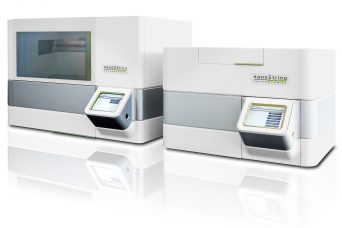
nCounter analysis – Nanostring
nCounter analysis – Nanostring : The nCounter® Analysis System from NanoString Technologies offers a simple, cost-effective way to profile hundreds of mRNAs, microRNAs, or DNA targets simultaneously with high sensitivity and precision. Digital detection of target molecules and high levels of multiplexing eliminate the compromise between data quality and data quantity, producing gold-standard sensitivity and reproducibility for studies of hundreds of targets. NanoString’s system uses molecular “barcodes” to detect and count hundreds of unique transcripts in a single reaction. Unlike other methods, the protocol does not include any amplification steps that might introduce bias to the results. The systeme is divided in two parts:

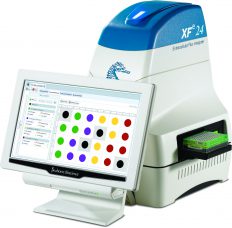
Seahorse XFe24 – Seahorse Bioscience
Seahorse XFe24 analyzers simultaneously measure mitochondrial respiration (oxygen consumption) and glycolysis (the release of H + ion) using non-invasive optical microsensors. Featuring a transitional microchamber the XFe24 allows for accurate measurements, non-invasive, non-destructive on 24 samples simultaneously with the sequential automatic injection of 4 drugs to specifically study different mitochondrial complexes, for example. One advantage is that the XFe24 is usable not only on monolayers of adherent primary cells (differentiated or not), cell lines, non-adherent cells, on isolated mitochondria but also on isolated pancreatic islets allowing accurate analysis of mitochondrial function in different tissue environments.

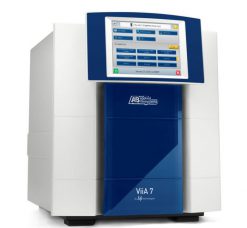
Viia7 Real Time PCR System – Life Technologies
Viia7 Real Time PCR System – Life Technologies : The new ViiA™ 7 System is a 7th generation real-time PCR system that enables high-productivity qPCR through flexibility, and performance.
Each study can be performed with 96 or 384 samples

TLDA – Life Technologies
TLDA means TaqMan Low Density Array and allows you to measure gene expression using the comparative CT method of relative quantitation. It’s possible to study plenty of genes or miRNA on severals samples in a very small reaction volume (2 µl: 1 µl of sample and 1 µl of reaction mix).
Two types of 384 wells TaqMan Array cards are available:
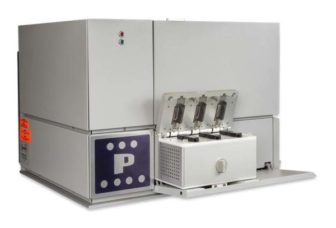
Pamstation12 - PamGene
The PamStation 12 is a fully automated instrument designed for processing PamChip 4 microarrays. It is available with either phosphotyrosine kinase (PTK) or serine-threonin kinase (STK) arrays. The 3D surface of the PamChip microarrays provides unique characteristics to allow real-time analysis of nucleic acid and protein binding for allows enzymatic reactions of kinases to be followed kinetically.
The sample consisting of protein and labelled antibodies are dispensed onto the PamChip, which is placed in the PamStation12. Once inside the instrument the sample is hybridized or incubated at a pre-determined temperature. During hybridization or incubation the sample is pumped back and forth through the porous material to maximize binding kinetics and minimize assay time. Reaction times are typically minutes to an hour.
